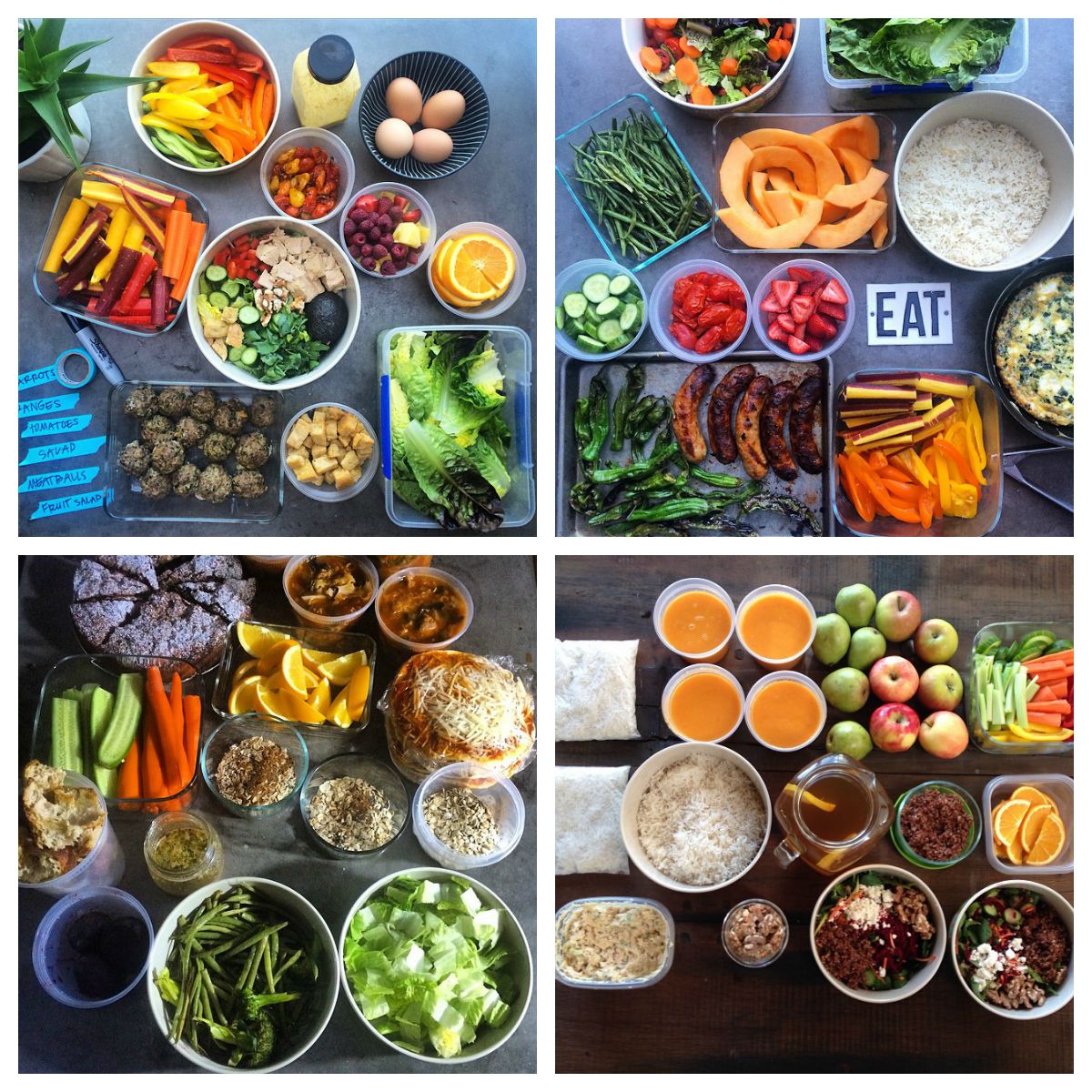Healthy Meal Prep 101

Photos by Tracy Benjamin/Flickr
Have you ever found yourself staring into your refrigerator on a Sunday night, realizing you have no healthy food for the week ahead? This common problem can be fixed with a simple solution: meal prep. “Having a plan is the best way to ensure that you’ll have healthy options,” says registered dietitian Marci Anderson Evans. “Leaving things to chance, whether it’s healthy eating or exercise, makes it that much harder to follow through.”
With the Evans’ help, we broke down the deceivingly complicated process of meal prep to save you time and keep you eating healthy all week long.
Plan:
Before you rush to the grocery store, Evans suggests finding one or two simple recipes and building your list around them. If you don’t have time to find a recipe, focus on balanced meals and shop based on food groups. “Make sure your recipes or shopping list includes vegetables, protein, healthy fat, and whole grains. Aim to have something from each category,” she says. By working with the basic food groups, you can easily prepare a complete meal that doesn’t require a lot of thought, such as stir-fry with brown rice.
To ensure that you don’t forget anything when you go to the grocery store, Evans also suggests keeping a list of groceries or easy recipes in your phone.
Shop:
Now that you have a plan, it’s important to set aside one day per week to shop and cook. When buying groceries, choose protein that can be used in all types of meals, such as eggs and chicken sausage. Purchase a variety of produce and stagger it in the order that it will go bad. Hearty fruits and vegetables, such as apples and kale, will last longer than other perishable options.
The components of your meals don’t have to be complicated and time consuming either. “I’m a big proponent of using things that are pre-prepped for you and adding nutritious ingredients into it,” Evans says. “Someone who is tight on time and doesn’t have a lot of experience could buy pre-cooked brown rice or pre-grilled chicken. You’re blending together frozen or pre-cooked food with fresh food to create a balanced meal.”
Cook:
Once you have the ingredients, set aside some time to prepare basic components if you haven’t already bought them pre-made. Evans recommends grilling meat or produce, as long as it isn’t overcooked and charred. She also suggests sautéing vegetables or roasting them, especially for big batches. “At the beginning of your week, buy some vegetables, pre-chopped if you have the money, lay them out on a pan, drizzle with olive oil, and roast them. Then you can just throw them into different meals over the course of the week,” she says.
Evans also encourages being openminded when it comes to leftovers and cooking in large quantities. “The amount of time it takes to make one meal is not very different from a couple portions,” she says. “Eat dinner leftovers for lunch the next day, and you’ll save time and money.”
Store:
Now that you have everything cooked and prepared, storing the food properly will make it easier to grab your meal and go. Evans recommends buying glass Pyrex containers, which are preferable to plastic, especially if you’re heating up the food.
Maintain:
Although meal prep takes time and advance planning, is a promising way to stay on track. But Evans says the hardest part is sticking to it. To prevent losing momentum, she suggests bringing in a spouse or friend. “One of the things I recommend is trying to get other people involved,” she says. “If you have a support or help, it’s easier to stick with it and keep it high on the priority list.”


